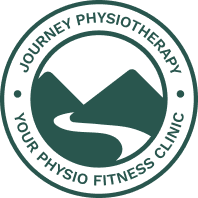The need for physiotherapy to champion exercise
The roots of Physiotherapy were planted during world war I and II. We strengthened, encouraged and taught people to move again following injury. Since this time there has been a slow transition towards more passive treatments and pain eradication. I think the time has come for us to refocus our attention on how the simple, but incredibly dynamic, tool of exercise can get more people moving, with less pain and better health.
Although more and more private practice patients are seeking pain relief most seek help because the pain is inhibiting their ability to be active. The 80s, 90s, and 2000s were dominated by the manual therapists of physiotherapy. For a time we were looking more and more like chiropractors. In an attempt to distinguish ourselves we offered yet another passive intervention, dry needling. I believe the time has come for us to move past these passive interventions, which have shown to be mostly ineffective, and return to our exercise roots.
We are an incredibly well educated, dynamic group of healthcare professionals. For our group to be relevant and effective in the years to come we need to become the experts and champions of healthy living through exercise. Our schooling needs to offer more on motivation, behaviour change, and exercise. We need much less time learning how to mobilize joints, rub tissue, and prescribe easy and ineffective exercise.
Personal trainers are too often seen as the exercise experts. We need to be the exercise experts in the healthcare setting. Massage and Chiro can offer passive relaxing treatments and we can champion an active approach to better health and less pain.
Sadly many of the so called experts in Canada are holding onto a biomedical model in which manipulation, mobilization, massage and dry needling are the gold standards of care. Getting your FCAMP or Chan Gunn certification is not easy but most of the lessons are theatrical and low value. A big portion of the masters program is still devoted to manual therapy, joint mobilization, massage and electrotherapy. To great dismay UBC now offers an advanced masters, focusing to an even greater detail on manual therapy skills. Instead of creating and producing research clinicians we are heading down a path that will be rendered obsolete in the coming years as the evidence mounts against this type of program. UBC has an opportunity to create skilled physios with its masters program. The advanced program is purely an attempt to cash in on a massive continuing education market for Physiotherapy. As I said earlier but would like to repeat, if UBC believes it is a research university it should be funding and shepherding more students into PhDs not manual therapy skills.
I would love to see physiotherapy position itself as the healthcare profession that promotes: healthy lifestyles, exercise, disease reduction, and injury management. Our clinics should slowly evolve into spaces which look like the the Live Well Exercise Clinics. This private group has done an incredible job at targeting and helping a group of patients who need exercise to help manage their health. We have an opportunity to emulate and build upon this idea.
One step to help develop better exercise skills for Physios in Canada would be the start of an exercise division in the CPA. We have an animal division and an acupuncture division but no exercise division. This is crazy considering how often this tool is used to help our patients. The division would help participants develop the following skills.
Creating plans that stick – how to motivate and keep patients on track
The education that surrounds exercise as medicine
Understanding the science behind motion is lotion
The basics of strength and conditioning – how do we get patients stronger? How do we build muscle?
I think the ideas and arguments in this blog need to be developed and strengthened but its a start to the discussion.
Dave
